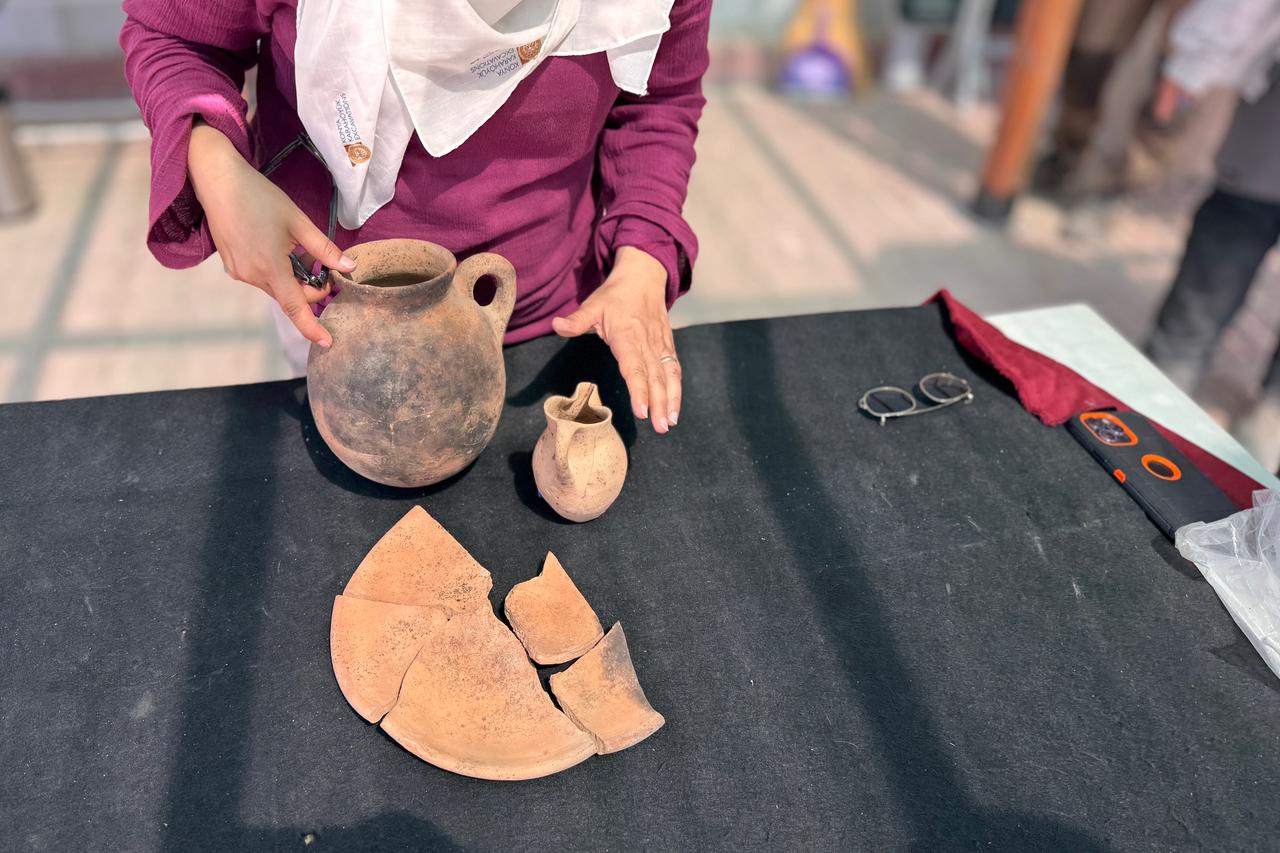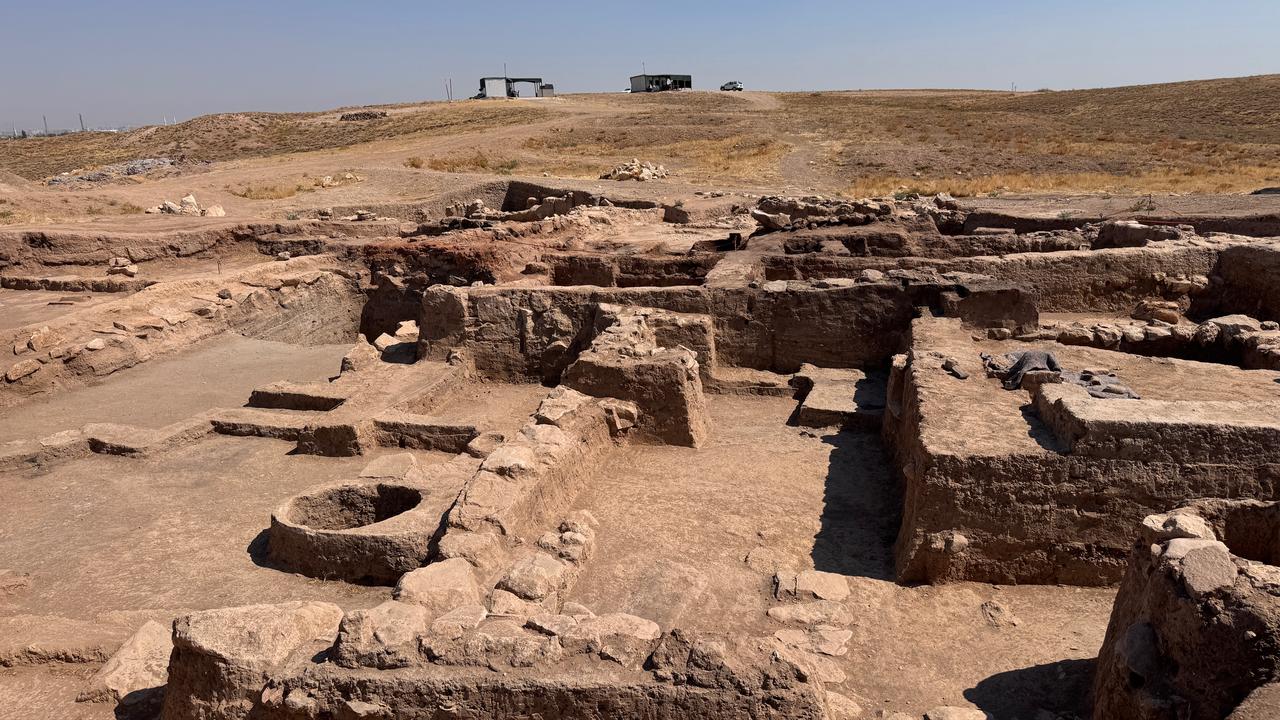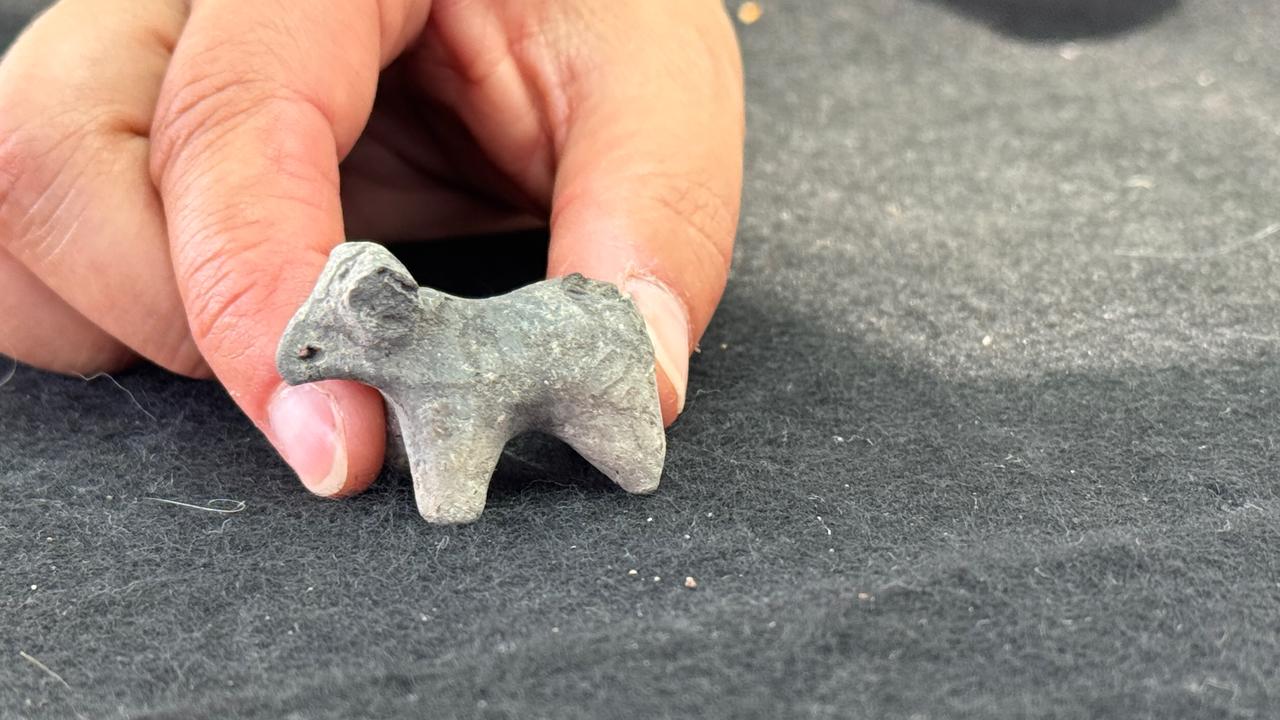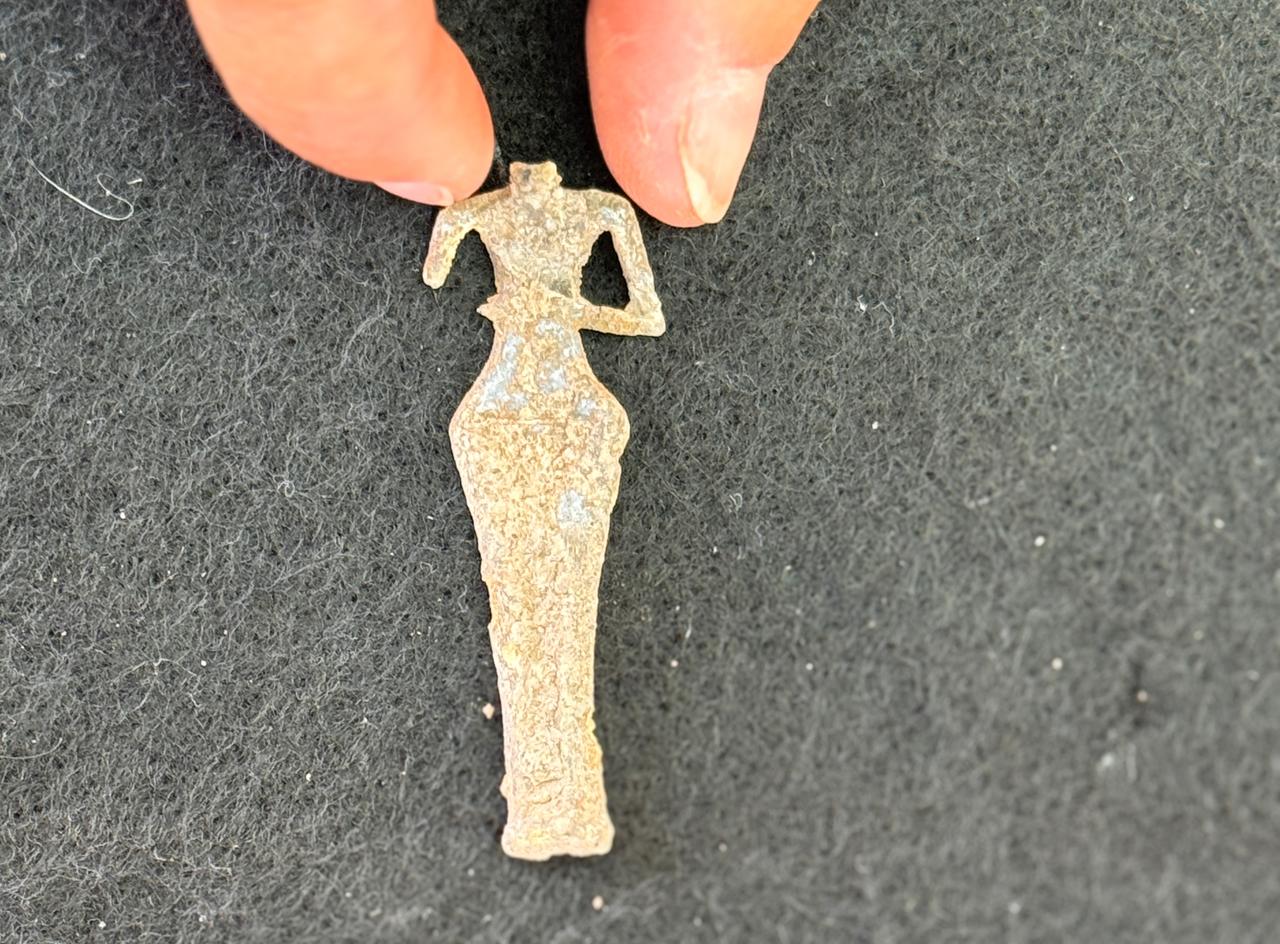
Archaeologists working in Türkiye’s central province of Konya have unearthed a 3,500-year-old set of vessels consisting of a jug, a plate, and a handled cup. The discovery sheds light on the daily life and social practices of one of the region’s most important ancient trade hubs.

The excavation at Karahoyuk, located in Konya’s Meram district, is being conducted with the permission of the Ministry of Culture and Tourism and supported by Konya Metropolitan Municipality. The project is led by Associate Professor Gonca Dardeniz Arikan of Istanbul University’s Faculty of Letters, Department of Archaeology.
During the fourth season of excavations, archaeologists uncovered a set of dining vessels inside a public building, along with cremation burials, a ritual altar, and several small artifacts such as toys and figurines.
According to Arikan, these finds reveal valuable insights into agricultural activities, religious practices, and everyday production in the settlement. She noted: “We found a kitchen set where eating and drinking activities took place. The jug, a jug with a trefoil mouth, and the plate were discovered together. The cup has been restored, and the plate is still under conservation.”

Among other findings is a clay bull figurine dating back 3,500 years, believed to have been a child’s toy. Wheel-shaped or animal-shaped miniatures were also identified as play objects, reflecting how children of the time sought entertainment. Archaeologists also uncovered a goddess figurine made of lead, likely used as an amulet, further underlining the importance of protective and symbolic objects in daily life.
The excavations also revealed around 60 infant burials within the settlement. These discoveries, together with the ritual altar, indicate the coexistence of domestic life and sacred practices within the same architectural spaces.

Karahoyuk is known to have been one of the key commercial centers of its time. The latest season of excavations confirmed this by bringing to light silver plaques wrapped in textile, believed to have been the capital of a merchant. Arikan described the finding as highly significant, remarking, “It must have been a merchant’s capital. We already knew traders lived here, but this is the first time we can approach them so closely.”
The team also uncovered seals, seal impressions, and a small piece known as “counting clay” bearing markings, all of which point to a sophisticated system of commercial record-keeping. Arikan compared the discovery to the foundations of a chamber of commerce, noting that merchants of 3,500 years ago had identifiers much like today’s tax numbers and signatures.

Karahoyuk dates back to the early second millennium B.C., a period associated with the Old Hittite Kingdom. The site contains evidence of ten distinct settlement layers, reflecting continuous habitation. Archaeologists are currently focusing on the southwestern part of the mound, aiming to piece together the architectural layout and functions of the public buildings where many of the latest discoveries have emerged.
The newly unearthed artifacts are undergoing conservation and are expected to be put on display at regional museums once the work is complete.